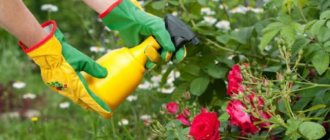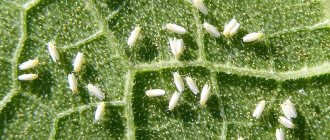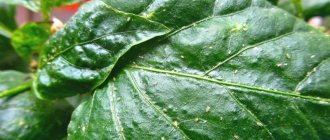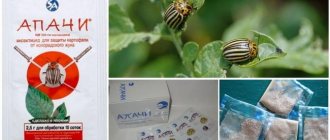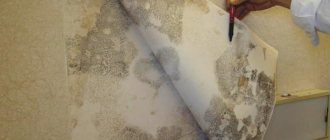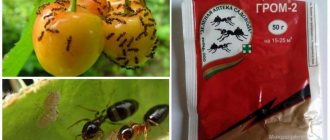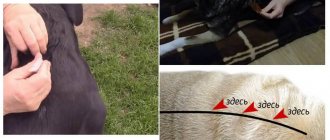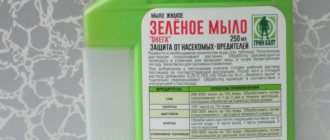- September 1, 2018
- Plant care
- Olya Bodrova
There are more and more insect pests every year. They master new plants and gradually acquire immunity to popular insecticides, so it becomes increasingly difficult to save the crop. Sometimes the question is even raised about the future life of the entire garden, and the owners decide to take drastic measures. In fact, you just need to better look for a suitable new drug, to which insects have not yet become accustomed. The insecticide “Aktara”, known for many years, but not very widespread, belongs to this category.
Description of the drug
The active ingredient of the pest control product is presented in the form of dry granules placed in vacuum packaging. The granules are light cream in color and odorless. The drug "Aktara" is used for spraying plants with a prepared aqueous solution or for watering at the root. In any case, the dry substance must be dissolved in water before use. Most often you can find vacuum packs of 1.4 g or 4 g of the drug, but containers with 40 g, 250 g of granules inside and a ready-made concentrated solution are also sold.
The cost depends on the number of crystals. Small packages can be purchased for 45-150 rubles. A large volume will cost 2000-2500 thousand rubles.
Chemical composition
The active ingredient in Aktara is thiamethoxam. There are simply no other chemical elements in the composition. This substance does not pose a danger to humans, since it accumulates in the tissues of plants and fruits in minimal quantities. For insects, its effect begins within half an hour after treatment. First, the drug immobilizes the digestive system of the pests, after which they are still alive, but their movements are already slowed down. Within 24 hours after applying the product, the garden and vegetable garden are completely cleared of pests. When treating tall trees, according to the instructions for use, Aktara reaches the crown only after 3 days due to its movement with the help of the internal juices of the plant. Only the prepared solution or dry granules of the drug pose a danger to humans, but if all safety measures are followed during the preparation of the composition and processing of plants, then no negative reactions will occur.
Action
The active ingredient of Aktara is thiamethoxam. After 30 minutes from the moment the solution is applied to the plants, the pests lose their ability to feed and die within 24 hours. Thiamethoxam penetrates into plant tissue (but not into fruits) through the vessels, the entire vascular system of the plant in 20 hours. When applied by the roots, the effect of Aktara lasts up to 2 months, and when sprayed on leaves - up to 1 month.
The drug does not react to the action of sunlight; its effectiveness is practically not affected by either dry air or humid weather. By following the manufacturer's instructions when mixing the solution and processing crops, as well as using Aktara in combination with other insecticidal agents, you can avoid complications such as resistance.
- Copper sulfate - instructions, reviews, storage
Aktara can be processed:
- grain crops;
- vegetables;
- fruit trees;
- vegetable seedlings;
- berry bushes;
- decorative flower crops;
- houseplants.
Aktara is used to treat seeds, tubers, and also to protect plants during the entire growing season.
The advantages of Aktara are:
- very fast action;
- wide spectrum covering many pests;
- lack of such a property as resistance;
- prolonged protection when applied at the root;
- compatibility with many chemicals;
- stimulating effect on plant root growth;
- increasing seed germination;
- resistance to the vagaries of weather;
- the possibility of exposure not only through leaves, but also through the soil;
- economical consumption;
- convenient packaging.
Due to its effectiveness against many types of insect pests, Aktara is irreplaceable, but it has analogues: Adamant, Cruiser, Tiara, Doctor, Voliam Flexi and Ephoria. These insecticides have similar properties and perform almost the same functions, since their main active ingredient is also thiamethoxam.
Properties of matter
The systemic effect of the drug is combined with the contact one, which ensures maximum effectiveness in pest control, according to the instructions for use. The drug "Aktara" is effective at any time, so you can treat damaged plants with it regardless of the number of pests, but you should remember that the substance only affects adult individuals.
The systemic effect is ensured by the destruction of insects into the digestive tract of which the treated leaves or fruits have entered, so the spectrum of action of the drug is very wide. The contact action ensures control of pests that have just settled on the plants. There is no need to wait a long time for the effect; according to the instructions for use, Aktara instantly penetrates the roots, leaves and shoots, so even untreated areas of the plant become dangerous for insects. This leaves no traces. The product works equally well both when spraying and when watering, its consumption rate is low, and adverse weather conditions do not affect its effectiveness. The only exception is rain that falls in the first 2 hours after treatment.
Whitefly: fight with folk remedies
The simplest methods of controlling whiteflies, effective at the initial stage of “population” of pests. They are based on disruption of the life cycle of insects.
Wiping leaves with water
The larvae turn into adults within a week. All this time they are actively feeding and are on the underside of the leaf blades. To reduce the number of pests, you need to destroy the larvae. To do this, wipe the leaves every week with a sponge dipped in water. It is advisable to add a small amount of soap to the water. When processing, you must try to remove all the larvae from the leaves. Over time, the whitefly population will be destroyed.
This method is suitable for small numbers of plants. In greenhouses and large-scale plantings, water treatment is an unreasonably complex and often ineffective procedure.
Wiping the leaves with water helps get rid of whiteflies and also keeps the plant clean
Reducing the temperature to 10°C
As temperatures drop, adult whiteflies die. However, some eggs and larvae can still survive by going into a state of hibernation. Then, as soon as the temperature rises to 15°-18°C, they will begin their subversive activities again.
We suggest you read: How to treat soil against whiteflies
Other folk remedies for whiteflies are special biological solutions used for spraying and watering.
1. Soap solution
Laundry or tar soap (planed on a grater, crushed with a knife) is dissolved in water in a concentration of 1:6. The solution is whipped into a strong foam and applied to the plant with a sponge. You can use the solution to spray (without first whisking) the green parts of the plant. The surface of the ground near the plant is also carefully sprayed, trying not to get into the deep layers of the soil.
Sometimes one treatment is enough to completely destroy the whitefly, otherwise repeat after a week.
The soap solution is very effective, but if the concentration of soap is exceeded, it can cause burns on delicate leaves.
2. Garlic infusion
Chop 6 g of garlic (2 medium cloves) and add 1 liter of water. Infuse in a dark place for a day, then filter and spray the plants with the resulting infusion. Usually 2-3 treatments are required with a break of a week.
3. Yarrow infusion
80-90 g of yarrow leaves are poured into 1 liter of water. Leave for 2 days, filter and spray the whitefly-affected plantings 2-3 times at weekly intervals.
4. Tobacco infusion
A pack of cigarettes (Prima type) is crushed and filled with 1 liter of hot water. Place the solution in a dark place for 5 days. Then filter the resulting infusion and spray the plants every 3 days until the pest is completely destroyed.
5. Dandelion infusion
Take 40 g of rhizomes and 40 g of dandelion leaves, chop them and add 1 liter of water. Leave for 3-4 days. Then filter the infusion and spray the plantings 2 times with a break of a week.
Duration of effect
Recently, the popularity of the drug "Aktara" has been growing. The instructions for use position the product as one of the easiest to use, but with a long-lasting effect. According to the information indicated on the packaging, the duration of exposure depends on the method of processing the plants. So, after spraying the plants, the effect lasts no more than a month, and when watering, the period without pests increases to 60 days.
It should be remembered that frequent treatments with an insecticide with the same active ingredient can provoke addiction in insects, as evidenced by the instructions for use of Aktara. When to process? Reviews recommend starting to destroy pests in the spring when their numbers are small. You can also find recommendations from experienced gardeners who note that watering plants with the drug and then spraying them helps to get rid of any insects for a long time without additional subsequent treatments.
Instructions for gardening
To quickly save trees from various pests, the solution should be prepared depending on the method of application. For spraying, you need to dilute 4 g of the drug in a bucket of water. If the treatment is carried out by watering, then the solution should be less concentrated and it is enough to take only 2 g of the substance per bucket of water.
If you need to treat seedlings against insects before planting in the ground, then their roots should be soaked for 2 hours in a saturated solution - 1.5 g per 1 liter of water. In this case, the effect of the liquid will end after soaking 200 sprouts, so when planting more seedlings, you should immediately prepare a larger volume of the product.
To protect potatoes from the Colorado potato beetle, you can spray the tubers before planting them. To do this, 6 g of the drug should be diluted in 0.3 liters of water and distributed over the surface of the planting material. After the tubers are dry, they can be planted.
According to the instructions, Aktara can effectively protect any garden crops. For this purpose, the drug can also be diluted in different concentrations for different purposes. Plants should be sprayed with the mixture during the growing season. For potatoes and tomatoes, you need to dilute 1.2 g of the substance per 10 liters of water, for peppers and cabbage - 1.5 g per the same volume of liquid. If necessary, get rid of aphids on any plants - 2 g per bucket of water. Treatment of garden decorations, including flowers, is carried out with a more concentrated solution - 8 g of the drug per 10 liters of water. To water the plants, prepare a mixture of 4 g of granules and 2 liters of water, then pour 50 ml of the composition under each bush.
Whitefly: how to fight?
Whiteflies, which look like small, inconspicuous butterflies, are found not only in the garden, but also at home on indoor flowering plants, so methods of combating this parasite should be known not only to gardeners and vegetable gardeners, but also to ordinary lovers of flowers growing on the windowsill. You can get rid of aleurodids using ready-made insecticidal preparations, folk remedies, and plants that repel these insects with their smell. You can also defeat them mechanically.
Ready-made insecticidal preparations (Aktara, Fitoverm, Komandor, etc.) are effective against whiteflies. To get rid of aleurodids and not harm your health, insecticides must be used in strict accordance with the manufacturer’s recommendations.
| Drug name | Active ingredient | Restrictions on use | Personal safety measures when working with insecticide |
| Vertimek | Abamectin |
|
|
| Fitoverm | Aversectin-S | ||
| Commander | Imidacloprid | ||
| Confidor | |||
| Aktara | Thiamethoxam | ||
| Aktellik | Pirimiphos-methyl |
We suggest you familiarize yourself with: Tsifoks for cockroaches. “Tsifox”: how to dilute, in what proportion to use against bedbugs, ants, mosquitoes, cockroaches and lice How to dilute Tsifox against fleas
| Ingredients | Preparation | Application |
| Tar soap | Dilute finely grated soap with water in a ratio of 1:6. | Spray the solution in a spray bottle on petunia, rose, cabbage, tomato or other plant affected by whitefly. |
| Beat the soap into a thick foam. | Apply soap suds using a sponge to the leaves affected by aleurodids. | |
| Garlic | Pour crushed 2-3 cloves of garlic into 1 liter of water. Strain the mixture infused overnight. | Spray areas of the plant where there are accumulations of the pest. |
| Yarrow | Pour 100 g of freshly picked herbs into 1 liter of warm water. Leave the mixture for several days, then strain. | |
| Tobacco | Remove tobacco from a pack of strong cigarettes. Pour the raw material with a liter of water at 60–80 degrees. Leave the tobacco mixture in a dark place for a week, then strain. | |
| Dandelion | Mix 50 g of rhizomes and leaves of the plant. Pour the crushed raw material into a liter of warm water. Strain the product infused for 5 days. | |
| Ammonia | Dilute 50 ml of ammonia in a bucket of water. To make the liquid stick better to the leaves of the affected plant, it is recommended to add a little liquid or grated bar soap to it. | |
| Ash | Pour 1 glass of ash into 5 liters of warm water. After the product has infused, dissolve 50 g of grated laundry soap in it. | |
| Mix the ash with powdered tobacco. | Treat the whitefly-affected leaves with the mixture and sprinkle soil at the roots of the affected plant. | |
| Iodine, soda | Dilute 1 tbsp. l. soda and 12 drops of iodine in 3 liters of warm water. | Treat the affected plants with the product. It is recommended to do 2-3 treatments at weekly intervals. |
| Pyrethrum, alcohol | Infuse 30 dried herbs with 100 g of alcohol for 12 hours. Dilute the strained ready-made infusion with 1 liter of water. | Spray the plant 3 times. Between treatments you should take 3-day breaks. |
Whitefly tape
| Name of insect control device | Features of application | Effective brands |
| Duct tape | Hang the traps at a height of 20 cm above the plants (petunia, roses, geraniums, vegetables), lifting the ribbons upward as they grow. Like most pests, whiteflies are attracted to bright colors, so it is best to buy yellow or blue traps. | Aeroxon, Bona Forte, BROS, Planet Garden |
| Checker | Install the device in the center of the greenhouse or greenhouse. The smoke that the bomb produces will disinfect the air and kill pests. | Quiet evening, Help, Vulcan, Hansson |
Some plants are able to repel pests by releasing aromatic substances that not only repel insects, but in some cases also have a toxic effect. Many of them also have insecticidal properties. The following will help to repel whiteflies and fight them:
- peppermint;
- wormwood;
- thyme;
- nasturtium.
If you treat the affected plants with insecticidal preparations (Fitoverm, Aktara, Confidor), you will not be able to get rid of pest eggs. Their eggs and larvae can only be destroyed using a biological method, which involves introducing natural enemies to the crop pests: encarsias, macrolophus bugs, lacewings, and ladybugs.
The main advantages of using biological agents to combat aleurodides are high efficiency and safety for the environment and humans. You can buy beneficial insects or plant plants that attract them near the plantings: daisies, marigolds, marigolds.
You can fight whiteflies using both traditional and modern methods using chemicals.
There are many means to combat whiteflies: traps, sprays, sticks, soluble powders
Most chemicals are effective because they poison the plant sap with their poisons. After drinking poisoned juice, adult whiteflies and their larvae die in a matter of hours. It should be understood that the eggs remain intact and unharmed. Therefore, to consolidate the “lethal” effect, it is recommended to repeat treatment with poisons 1-2 times with a break of a week.
We invite you to familiarize yourself with: Doctor Rep air. universal repellent against ticks and mosquitoes 100ml – Protection against insects
Folk remedies for whiteflies are mostly of contact action. That is, they do not penetrate the sap of the plant, but enter the body of the pests and thereby destroy them.
Traps and fumigators should be included in a separate niche of measures to combat whiteflies. They require long-term use, as they destroy only adult individuals.
Home use
The insecticide in question can be confidently used not only on your site, but also at home, to control pests of indoor plants. "Aktara" copes well with aphids, thrips, scale insects, whiteflies, wireworms and other insects. The solution for spraying is prepared more saturated than for street work.
The entire 4 g package of the drug should be poured and dissolved in 5 liters of water. For irrigation, only 0.5 g of the substance should be taken for the same volume of liquid. The resulting mixture is enough to process 175 pots, so if there are much fewer of them, it is better to prepare the mixture with a different volume of water or simply pour out the excess.
Compatibility with other substances
In general, it is well compatible with other Aktara products. The instructions for use do not recommend mixing the substance only with alkaline preparations. These include compositions containing soap, lime or Bordeaux mixture. If necessary, you can combine the product with other insecticides at certain intervals. Alternating with Fitosporin will help you quickly get rid of a large number of pests. When combining the drug with antibacterial substances, the consumption rates should be significantly reduced so as not to damage the plant.
Security measures
The drug is classified as a third hazard class, so when working with it you should use safety glasses, a respirator or mask and gloves. Spraying should not be carried out during strong winds. Smoking, eating or drinking during any application of the mixture is prohibited. After treatment, you should dispose of the remaining mixture, wash the sprayer or watering container, take a shower and change clothes. It is prohibited to pour the solution into bodies of water. If the treatment was carried out indoors, then after it is carried out you need to ventilate the room.
In addition to being dangerous to humans, the drug can also harm the environment. The substance is very harmful to bees, so they are allowed to be released only 4-5 days after treating the plants. Until this point, a protective zone of several kilometers should be observed. Also, livestock should not be allowed into the treated areas. The substance is not dangerous for earthworms.
Safety Compliance and Toxicity
Aktara belongs to insecticides of hazard class 3, that is, low-toxic drugs.
In order to completely eliminate the risk of intoxication during processing, you must strictly follow the instructions and observe safety precautions:
- Insecticide treatment is carried out only with the use of personal protective equipment - goggles, respirator, protective gloves.
- Spraying of indoor plants is carried out in an open space or with open windows.
- After treatment, the remaining working solution and packaging must be disposed of.
When using Aktara, drinking, eating or smoking is strictly prohibited. After completing the work, you need to wash your face, hands and exposed areas of the body with plenty of cool water.
Aktara can be combined with other insecticidal drugs. It can be combined with agents whose action is aimed at destroying insect pests and fungal diseases. Aktar can also be combined with drugs that stimulate the growth of garden or vegetable plants.
The only limitations are insecticides and alkaline-based fertilizers. They cannot be combined with Aktara.
Help with poisoning
Symptoms of drug poisoning may include sweating, weakness, rapid breathing and even convulsions. There is no direct antidote, and to alleviate the condition, you need to provide the victim with access to fresh air, rinse the stomach and give a sorbent, and then consult a doctor. Similar actions should be taken if the mixture is accidentally swallowed. If the drug gets on the skin, blot it with a napkin without rubbing and rinse the area with plenty of running water. In case of contact with the eyes, the mucous membranes should also be rinsed under running water for 10-15 minutes.
Storage conditions
The shelf life of the drug is 4 years from the date of production, so for regular use it is more profitable to buy a large package for several seasons at once.
The insecticide retains its properties at temperatures from -10 to +35 degrees, the main thing is not to exceed humidity and protect the granules from direct sunlight. The product should be stored away from food, medicines, and the reach of children and pets. The diluted, unused solution cannot be stored.
Compatibility of AKTARA with other drugs
Aktara is compatible with most insecticides, fungicides, and growth regulators (zircon, Ribav-Extra, Epin, etc.), with the exception of drugs with an alkaline reaction. This is one of the drugs with which you can prepare tank mixtures. However, in each specific case, mixed drugs should be checked for compatibility.
Period of protective action
The period of protective action is 14-28 days when spraying the crop; for soil application - 40-60 days.
Impact speed
Insects stop feeding 30 minutes after treatment with the drug; complete death of insects occurs after 24 hours.
Toxicity
The drug Aktara is highly toxic to bees (hazard class 1, border protection zone for bees is 4-5 km; bee flight limit is 96-120 hours), slightly toxic to birds, fish, earthworms and aquatic organisms. Avoid contamination of reservoirs and sources of drinking water with residues of the drug, working solution and water used for washing containers and equipment.
Security measures
Hazard class - 3 (moderately hazardous compound)
When working with Aktara, it is necessary to comply with the requirements and precautions in accordance with SanPiN 1.2.1077-01 and use personal protective equipment for the skin, eyes and respiratory system. Processing should be carried out using personal protective equipment.
While working, you must not smoke, drink, or eat. After finishing work, change clothes, wash your face and hands with soap, and rinse your mouth.
Storage of the drug
The drug must be stored in a cool, dry room at a temperature from -10 C to +30 C, separately from food and medicine, in places inaccessible to children and pets! Storage of the working solution is not allowed. Burn the emptied container in a special place without inhaling combustion products! Do not use for other purposes. Do not dispose of in sewers, rivers or other bodies of water.
First aid for drug poisoning
If the drug gets into your eyes, rinse immediately with plenty and thoroughly of running water. In case of contact with skin, wipe off the product with a clean cloth and immediately wash with soap. If the drug is accidentally swallowed, give several glasses of water with charcoal to drink, and then induce vomiting. There is no specific antidote for the drug.
Suitability of the drug
The drug in closed packaging is good for 4 years from the date of manufacture.
Reviews
The effectiveness and practicality of the drug is fully confirmed by the instructions for use. Aktara also collects positive reviews from almost all gardeners who have used the product on their plots. The disadvantages include the gram packaging, since there are a lot of granules for processing house plants or small gardens. Also, the drug does not affect the larvae, so re-treatment may be required after a few days.
Otherwise, the product has proven itself well among gardeners and among home plant lovers. The drug really copes with pests within 20-30 minutes after use. Some still note that its effect ends earlier than the stated period or after rain, but repeated treatments always help save the entire crop.
Instructions for use
Aktara belongs to the chemical class of neonicotinoids, acting on the nicotinic acetylcholine receptors of the insect nervous system. The active substance, thiamethoxam, penetrates mainly into the leaves through the vascular system, but practically does not enter the fruits. At the same time, the drug is completely redistributed throughout the leaf tissues of the plant 20 hours after watering. When watering large plants with actara, after 1 - 3 days the solution reaches the upper stems and shoots. Aktara is resistant to sunlight and does not reduce its effectiveness in dry air or rainy weather. The period of protective action is 14 - 28 days when sprayed on the leaf, 40 - 60 days when applied in soil.
There is a possibility of resistance arising (research has proven that pests become accustomed to repeated treatments), in particular, repeated outbreaks of damage by scale insects and whiteflies occur. This is also explained by the fact that actara acts on the larvae, i.e. Only at the feeding stage, if the root ball is not evenly moistened, the larvae hatched from the eggs can remain in the ground. And with each watering, the soil gets rid of traces of the insecticide. To prevent resistance, it is recommended to alternate actara with insecticides from other chemical groups. Aktara is compatible with most insecticides, fungicides, and growth regulators (Zircon, Epin, Amulet), except for drugs in which the solution has an alkaline reaction (Bordeaux mixture, soap, lime).

